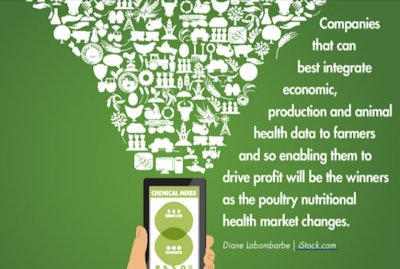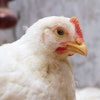
I started working in the feed additive business as a young scientist shortly after the European Union’s antibiotic growth promoter (AGPs) ban in 2006. Antimicrobial resistance as a priority policy was starting, and many saw it becoming a global trend.
The AGP ban trend invigorated an ecosystem of companies developing nutritional health technologies, many of which had been waiting for the right conditions to gain market traction.
At that point, many thought that trying to replace AGPs was naïve, but history has shown that it was possible, thanks to a high degree of entrepreneurship within companies, supported by novel nutrition and additive technologies.
The ecosystem developed, matured and produced a steady flow of innovations to sustain significant growth of the feed additives market.
Technology-based companies took leadership positions in areas such as probiotics, organic acid suppliers developed highly specialized technical businesses and phytogenics companies carved out areas of the market with novel value propositions. Large global nutrition and premix suppliers developed broad portfolios of nutritional health products through acquisition, partnerships and R&D investment.
The fundamentals, however, have now changed.
A new chapter
Overall, the growth of animal protein production has slowed in recent years while sustainability and resource availability have taken center stage. We are in a “full world,"
In high-income countries, where per capita consumption is already elevated, demand is expected to level off given ageing populations, consumer interest in greater protein source diversity and environmental policy shifts.
In contrast, in low- and middle-income countries, population and income growth will support further growth of animal protein consumption.
An interesting aspect in these dynamics is that many in countries where production growth continues, the removal of AGPs is lagging.
For nutritional health companies, a new landscape is emerging. The traditional AGP-free markets are maturing and growth slowing while new markets enter the AGP-free transition, but the long tail of AGP use seems persistent in the rest of the world.
Such a landscape will require focused efforts to support the industry and the last leg of AGP removal with economically viable solutions that fit local conditions in low- and middle-income countries.
With a robust nutritional health technology offering in place, the next step for companies goes beyond developing more advanced additives. They will play a role, and perhaps surprise us with an efficiency step change, but they will likely be just a very good tool in the toolbox.
Nutritional health beyond products
The biggest problem and the greatest opportunity for growth in the nutritional health market is the ability to design effective solutions that consistently maintain bird health and bring them closer to their genetic potential across the wide range of field conditions.
What is missing to get there: methods to reliably assess the various dimensions of health and objectively put together solutions, and a lot of data, to remove ambiguity and uncertainty.
This is a race for precision nutrition and health, to deliver existing technologies’ full value. In this nascent battlefield, players are taking completely different approaches, from bioeconomic optimization to microbiome analyses.
Whoever can best integrate economic, production and animal health data, and deliver it to producers to drive profit will have the upper hand. The move towards increased data intensity will continue.
Disruptions coming from this race have the potential to ease the transition to AGP-free for the rest of the world, delivering a significant boost to the productivity and sustainability of global poultry production.
Leading sustainability discussions with proactive action
















